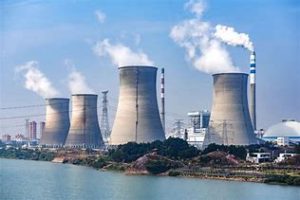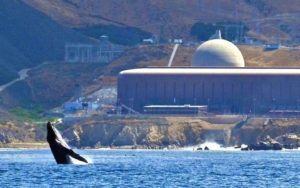I am not an expert on energy, but there’s enough information available for us common folks to understand the truth and myths being foisted upon us, and I’m going to share what I have learned in this brief report.
THE REASON FOR THIS REPORT- It’s the result of the continual scare tactics about climate change, the outrageously radical New Green Deal, and the endless spin on renewables as our emissions savior. I have had enough. As a layman, I have done considerable research over the years, and after reviewing the latest data, I decided to share it with you.
BEFORE I BEGIN, you should be aware that there are a number of charlatans in the environmental community predicting dire warnings for us earthlings. I’ve shared some of them with you in earlier posts.
Unfortunately, our youth are being recruited with the wild promise that they can make a difference. That adults won’t take climate change seriously, so they must take action. That action will come on March 15, 2019 when a student movement will participate in US Youth Climate Strike and ditch school to protest.
Not surprising, former Green Party candidate for President Jill Stein has been an advocate of striking for this cause. Five years ago, she co-authored an op-ed, ”The Global Climate Strike: Why We Can’t Wait,” with Ben Manski, president of the Liberty Tree Foundation for the Democratic Revolution. That organization’s board of directors is stacked with your typical social justice types, including Medea Benjamin, co-founder of CodePink.
The lead organizer of US Youth Climate Strike is 13-year-old Alexandria Villasenor of New York City. She skips school every Friday to protest in front of UN headquarters.
”I am on strike every Friday because adults have failed my generation,” she recently told CBS, ”I didn’t make this mess with the planet, they did. Your time is up, and if you won’t act, we will.” Guess who has teamed with Villasenor to help influence change … lsra Hirsi, 15, daughter of none other than Rep. llhan Omar.
While Villasenor’s mother, Kristin Hogue, is undoubtedly proud of her daughter’s effort, I wonder if she has reminded her of how global climate has gone through many cycles over the past centuries.
Villasenor, Hirsi and two other teenagers co-authored a piece, ”Adults won’t take climate change seriously. So we, the youth, are forced to strike.”
”We, the youth of America, are fed up with decades of inaction on climate change,” they tell their story of bringing attention to ”the millions of our generation who will most suffer the consequences of increased global temperatures, rising seas, and extreme weather.”
It’s not surprising that they support Rep. Alexandra Ocasio-Cortez’ Green New Deal, however, they say ”we have only 11 years to prevent the worse effects of climate change.”
One has to wonder who assisted them in their comparison of the time when FDR introduced his radical New Deal in 1933.
They are quick to complain about people with money, mentioning the Koch brothers, who ”shift the narrative on climate change” while they are beneficiaries of the fossil fuel industry. But the fact that billionaire Democrat Tom Steyer has poured $100 million to defeat climate change deniers is fine with them.
The teenagers say President Trump ”is a rabid climate change denier,” and are critical of his pulling us out of the Paris Accord, but I wonder, have they inquired how the UN has used the $1 billion contributed to the climate fund by the U.S …. $500 million by President Obama just days before leaving office?
With no attribution, they write, ”We strike because marginalized communities across our nation – especially communities of color and low-income communities – are already disproportionately impacted by climate change.” How is that possible?
THE CASE AGAINST RENEWABLES … solar and wind. I was captivated by a piece, ”Why Renewables Can’t Save the Planet,” by Michael Shellenberger. He writes of his involvement in environmental issues after college, wanting to ”dedicate myself to climate change.
”I thought the solutions were pretty straightforward: solar panels on every roof, electric cars in every driveway, etc.,” as he recalls President Obama’s ”investment” of $150 billion in renewables and other forms of clean tech.
”But right away we ran into trouble,” he writes as they discovered that electricity from solar roofs cost about twice as much as electricity from solar farms, but solar and wind farms require huge amounts of land. And they require long new transmission lines. This brought opposition from conservationists trying to preserve land and wildlife, particularly birds.
He tells of his coming to terms with the million birds killed by wind turbines after learning that house cats kill billions of birds every year. Later, he makes the point that cats don’t kill big, rare, threatened birds, like eagles, hawks and condors.
”In order to build one of the biggest solar farms in California, the developers hired biologists to pull threatened desert tortoises from their burrows, put them in the back of pickup trucks, transport them, and cage them in pens where many ended up dying,” he recalls.
He noted that in California, between 2011 and 2017 the cost of solar panels declined about 75 per cent while electricity prices rose five times more than the rest of the U.S.
Disillusioned, Shellenberger began looking into nuclear power. Because nuclear plants produce heat without fire, they emit no air pollution in the form of smoke. Incidentally, that white ”smoke” you see billowing out of a nuclear plant cooling tower is non-radioactive steam.
He discovered that a solar farm requires 450 times more land to produce the same amount of energy as nuclear plant.
Major studies have found that nuclear is the safest way to make reliable electricity. He points out that wind turbines kill more people than nuclear plants. With over 17,000 cumulative reactor years of commercial nuclear power in 33 countries, the human impact has been trivial compared with massive damage caused by carbon-based fuels.
Interestingly, Shellenberger writes of France’s experience. Under pressure from Germany, France spent $33 billion on renewables over the last decade, switching from a mostly nuclear power to a mix with alternatives. The result was more carbon emissions and higher electricity prices.
ANOTHER VOTE FOR NUCLEAR comes from Andrew Sullivan’s piece, ”A Radically Moderate Answer to Climate Change.” ”We know nuclear works … what we need is a massive nuclear energy program,” he says.
Nuclear power, he says, can be concentrated, consistent, and relied upon – rain or shine, windy or calm.
It’s not without its costs, indicating it would cost about $7 trillion to build a thousand nuclear plants that would allow us to get a quarter of our energy with no carbon emissions. Double that to get to produce half of our energy needs. Not bad considering the $93 trillion estimate of the New Green Plan. Nuclear is not mentioned in the NGP.
Sullivan suggests that a build rate of 61 new reactors per year could entirely replace fossil fuel generation by 2050.
But some reactors are slated to be closed. James Conca, writing in Forbes, says ”Closing perfectly good nuclear plants decades ahead of schedule is a bad idea if you care about the environment.”
On the wacko left coast, Pacific Gas & Electric plans to close its two well-running, low-carbon, low-cost nuclear reactors at Diablo Canyon, claiming that the energy would be completely replaced with alternatives and gains in efficiency. In truth, Conca reports that it will only equal about a quarter of Diablo’s generation.
Kramerontheright believes that nuclear energy gets a bad rap. Nuclear is one of the cleanest sources of energy, producing no greenhouse gases. It’s a mature technology and the latest generation of designs are even better, they cannot melt-down and cannot explode. The myths surrounding nuclear power are many and just that … myths. Solar and wind are not the real answer.
But our transportation … cars, trucks, planes and ships … will continue to require fossil fuels in the foreseeable future.
May God bless the United States of America







